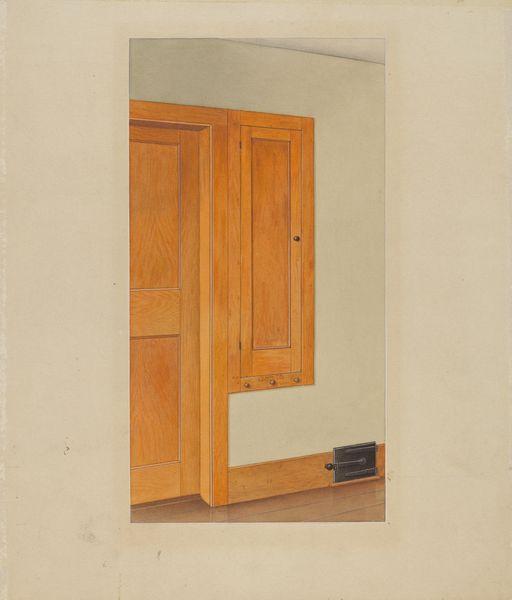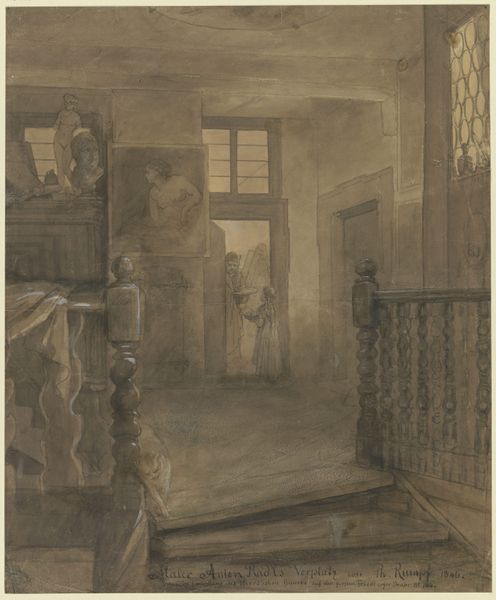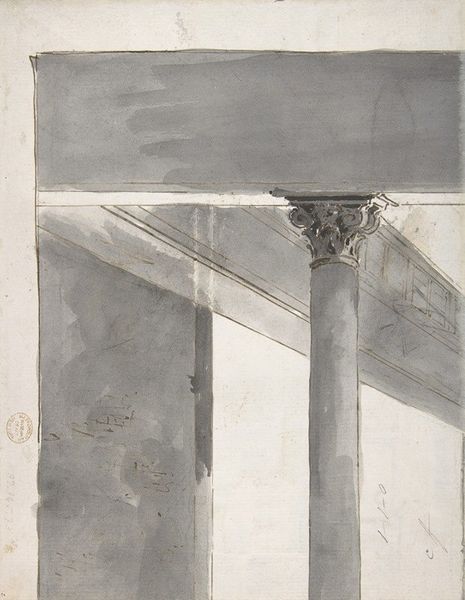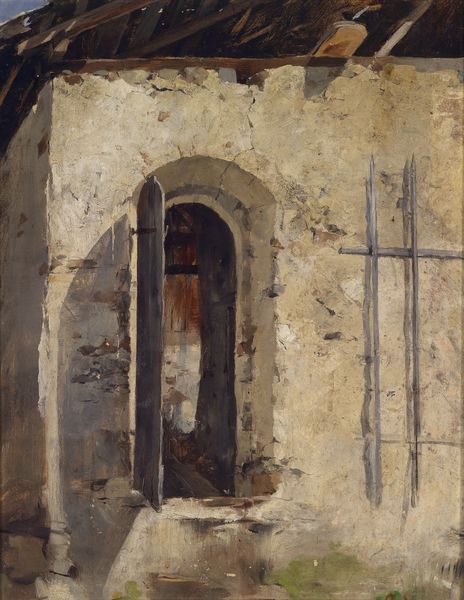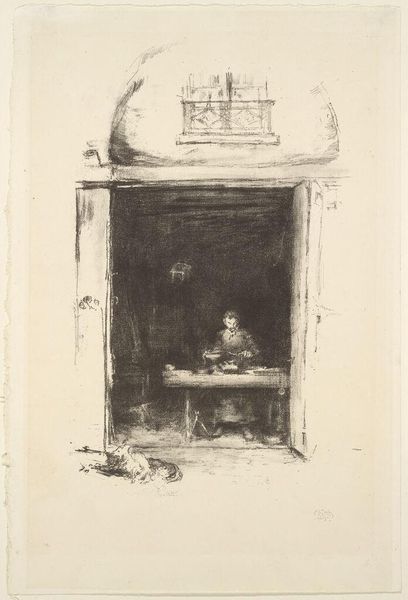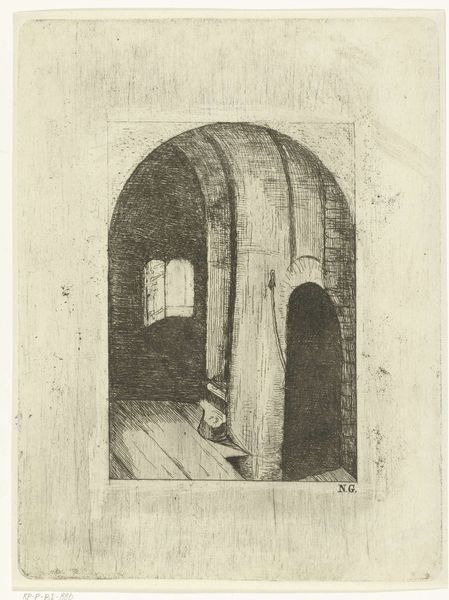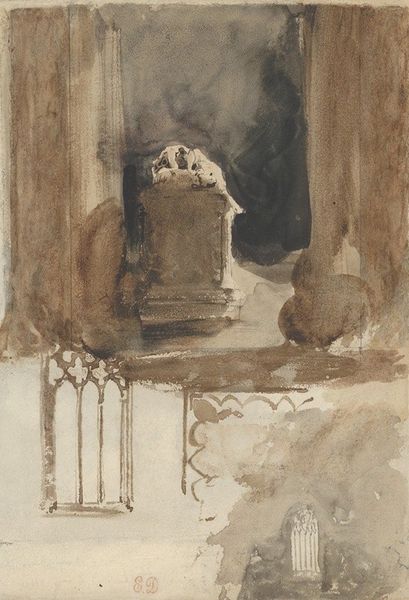
Dimensions: overall: 24.5 x 22.2 cm (9 5/8 x 8 3/4 in.)
Copyright: National Gallery of Art: CC0 1.0
Curator: Gwen John’s “A Corner of the Artist's Room, Rue Terre Neuve, Meudon,” created between 1915 and 1919, is a watercolor drawing that immediately feels...intimate. Editor: Yes, a very quiet intimacy. The subdued palette and sparse composition evoke a feeling of solitude, almost monastic. The textured paper feels very intentional. Curator: Indeed. This drawing presents a humble domestic space – a corner, quite literally – inviting considerations about the daily practices of the artist. One wonders, what are the material conditions of John’s creative labor in Meudon during the first World War? Editor: Precisely. How do these spaces – particularly for a woman artist in the early 20th century – influence the production of art, and perhaps more importantly, the construction and limitations of identity? It looks like quite a solitary existence. Curator: Watercolor allows for fluidity but is also susceptible to mistakes. Did the limitations imposed by her lifestyle also filter into John's artistic choices, making watercolor the readily available and useful choice for sketching, planning, and executing her creative ideas? Editor: The almost clinical detachment also reveals a certain degree of privilege. While portraying her subjective experience, John remained part of the modernist art circle, showing in the same spaces and using the same galleries as men like Matisse and Picasso. Curator: True, and John made specific material and artistic choices throughout her career. Her exploration of interiors as sites for art making is really an explicit effort to disrupt boundaries between what's viewed as women's work – the domestic – and fine art. Editor: John, though a complex and, at times contradictory figure, pushed against the grain in an important way for subsequent generations. This artwork makes her perspective palpable and very timely for audiences even today. Curator: It really urges viewers to think about not only the physical but also the social and intellectual architecture that fostered or prevented creativity. It feels special to appreciate such delicate interiority in such bold times.
Comments
No comments
Be the first to comment and join the conversation on the ultimate creative platform.
